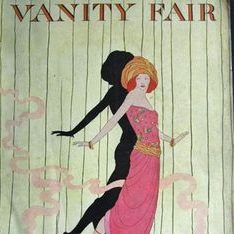By Christina Jedra
You might be familiar with the powerhouses in magazines today—Anna Wintour at Vogue, Joanna Coles at Cosmo, Nancy Gibbs at TIME, etc.—but do you know the history behind your favorite publishers?
Whippersnappers often snag an interview with a dream employer but have little knowledge about the publishing company behind their favorite title. Luckily, Ed’s got a crash course in magazine history so you know the brands and you’ll be ahead of the competition.
Condé Nast
Titles include: Brides, Glamour, GQ, The New Yorker, Vanity Fair, and Vogue
Condé Montrose Nast started his magazine career—after going to law school—by taking a job with his friend Robert Collier at Collier’s Weekly. (They always say it’s about who you know, right?) As advertising manager and then business manager, he made the magazine and himself financially successful. His media empire was born in 1909 with the purchase of Vogue, which was then a small fashion and society publication. Before his death in 1942, Nast added magazines like Vanity Fair and Glamour to the company portfolio. He also became known for his philosophy of “class publishing,” keeping brands tailored to a niche audience—a smart move for advertising.
Hearst
Titles include: Cosmopolitan, ELLE, Esquire, Marie Claire, O, The Oprah Magazine, and Seventeen
In 1887, 23-year-old William Randolph Hearst became the proprietor of the newspaper formerly owned by his father, The San Francisco Examiner. Hearst became both editor and publisher and transformed the paper with the latest printing equipment, a redesigned aesthetic, and top writers (including Mark Twain). The success of the Examiner led to Hearst acquiring and starting newspapers nationwide, including in New York where a circulation feud with Joseph Pulitzer would generate the term “yellow journalism.” (Fun fact: Hearst papers were read by one of every four American in the 1920s!) In 1903, Hearst branched into the magazine business with Motor magazine, and over the next decade took on titles like Cosmopolitan, Good Housekeeping, and Harper’s Bazaar. Today, Hearst says its mission is the same as it’s always been: to “inform, entertain, and inspire.”
Time Inc.
Titles include: ESSENCE, Fortune, InStyle, Sports Illustrated, TIME, and Travel + Leisure
In 1922, reporters and Yale University alums Henry Luce and Briton Hadden noticed a problem in the media market: People still needed information but had less and less time to consume it. The fix was the first weekly news magazine—aptly titled TIME. Magazines like Fortune and Life followed, and the company continued to apply its mission: not focusing on how much information was packed into a magazine, but rather how much was absorbed by the minds of readers. If Time Inc.’s contributions to the English language are any indication, they have succeeded; Time credits itself with bringing many words (some their own inventions) into popular usage including pundit, socialite, and World War II.
The Meredith Corporation
Titles include: Better Homes and Gardens, Family Circle, EatingWell, Every Day With Rachael Ray, and Parents
This Des Moines-based company got its start on the wedding day of its founder, Edwin Thomas Meredith, in 1902. His grandfather had given him control of his struggling newspaper, Farmer’s Tribune, as a wedding gift with a note: “Sink or swim.” Meredith decided to swim. He turned the paper around, sold it for profit, and started what he thought would be most helpful to a farming audience: a service magazine. By 1914, Successful Farming magazine’s circulation exceed 500,000, and the company grew from there. The first Better Homes and Gardens was introduced in 1924 and cost a dime at the newsstand. Throughout the 20th century, the Meredith Corporation launched and acquired several magazines and television businesses that make it a leader in the home, parenting, food, and wellness areas today.




 These Are the Reasons You Need a New Job Now
These Are the Reasons You Need a New Job Now